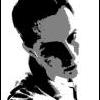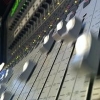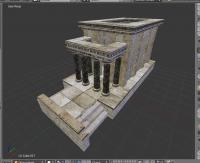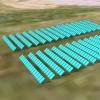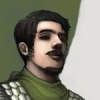Leaderboard
Popular Content
Showing content with the highest reputation on 2013-10-11 in all areas
-
2 points
-
Hi all I would just like to start off by saying that I think the 0AD project is fantastic. Although I can't write code, I have played my fair share of RTS games and I would like to contribute my ideas on what would make this game hopefully better. Starting with the critism: -no morale -no ability for units to push each other -units turn around almost instantaneously (correct me if I'm wrong on this) -when melee units clash, they do this wierd scattering thing which is reminescent of nightmares I used to have in AoE 2. I think these things are important to address. Quoting wikipedia: "...At certain points, a command would be given to the phalanx or a part thereof to collectively take a certain number of steps forward (ranging from half to multiple steps). This was the famed "othismos". At this point, the phalanx would put its collective weight to push back the enemy line and thus create fear and panic among its ranks. There could be multiple such instances of attempts to push, but it seems from the accounts of the ancients that these were perfectly orchestrated and attempted organized en masse..." (http://en.wikipedia.org/wiki/Hoplite) "...The acute shock of combat. Some scholars of the Roman infantry maintain that the intense trauma and stress of hand to hand combat meant that the contenders did not simply hack at one another continuously until one dropped. Instead there were short periods of intense, vicious fighting. If indecisive, the contenders might fall back a short distance to recuperate, and then surge forward to renew the struggle. Others behind them would be stepping up into the fray meanwhile, engaging new foes or covering their colleagues. The individual warrior could thus count on temporary relief, rather than endless fighting until death or crippling injury. As the battle progressed, the massive physical and mental stress intensified. The stamina and willpower demanded to make yet one more charge, to make yet one more surge grew even greater.Eventually one side began to break down, and it is then that the greatest slaughter began..." (http://en.wikipedia.org/wiki/Roman_infantry_tactics) Morale is a key factor in warfare and to put it bluntly, I feel that not representing it in any game that involves humans killing each other makes the game too simplistic. There is so much ground that can be covered, so many strategics and tactics that it can create, that it is an opportunity too good to miss. Not to mention that most of these strategies come intuitively as a game player. The pushing thing is a major peeve I have about RTS games. It would be a great addition to the game as it is intuitive, strategic and also historic. Taking control of the territory and pushing opponents could be used strategically, eg push opponents into unfavourable landscape or corner them against a river. Breaking the opponent's formation, especially using wedges, is also something that is supposed to work. Yet if it can't push and seperate the enemy formation, the wedge is absolutely meaningless. Calvary charges are also supposed to work too. Here are my suggestions: Morale As per alot of other RTS games, each unit would have a specific morale-bar akin to a hitpoint bar. It would scale according to unit type and level. Each type of attack would have a seperate morale-damage count in addition to the hitpoint-damage count. This would allow for the differentiation of intimidating attacks specifically designed to break enemy morale, eg fire or elephants. What I suggest in addition to this is that the attack capacity of the individual unit proportionally depends on the morale of the unit. 100% morale bar = 100% attack capacity, 0% morale bar = 0% attack capacity. This would make the morale bar relevant, something which alot of games unfortunately don't achieve. For the sake of simplicity I'll use using a linear system, although one could easily envision a logarithmic system that makes the morale suddenly crash after a critical point. Case study: -Wimp Skirmisher Hitpoints=100 Morale=50 Attack (hitpoint damage)=10 Attack (morale damage)=10 -Spartan Hoplite Hitpoints=100 Morale=200 Attack (hitpoint damage)=10 Attack (morale damage)=10 A hit by the skirmisher would reduce the hoplite's morale by 5% (190/200) and a hit by the hoplite would reduce the skirmisher's morale by 10% (40/50). This would reduce his attack by 10%, ie from 10 to 9. Note that the morale damage count doesn't decrease, so it would only take 5 hits by the hoplite to reduce the skirmisher's morale to 0 - representing the fact that he is a wimp and gave up on the fight even though he still has a sizable chunk of hitpoints left. On the other hand, the hoplite would only break after 20 hits and by then he would probably be dead anyway - thus living up to his reputation as a steadfast warrior. -Phalanx of 10 hoplites Hitpoints=counted individually Morale=counted collectively, ie 200x10 = 2000. (this rewards units for being in formation as their attack capacity becomes independent to how hurt they individually are). If the hoplite was in a formation of 10, then the skirmisher's attack would only reduce the formation's collective morale count by 0.5% (1990/2000) - hardly affecting the collective attack capacity of the formation. Morale regeneration -leaders (aura of morale) -territory (allied territory=morale regenerates, enemy territory=morale doesn't regenerate. Therefore the home advantage of fighting on one's turf is palatable). -healers, priests (in addition to healing the hitpoints, monks could also heal the morale. Perhaps even an opportunity to specialise the monk units into becoming better hitpoint healers vs morale healers?) -victory (successful killing of an enemy unit would regenerate the morale by a bulk sum, perhaps depending on how elite the enemy was?) Other opportunities with morale -special spells/skills, eg warcry which damages enemy units' morale in a blast radius -the morale bar could act as a 'mana' bar for special spells, especially for a temporary boost of speed or pushing maneuvers (eg "othismos") -heros and leaders actually doing something for their soldiers other than just acting as another big unit. -the classic '300' scenario with a small number of elite units holding off a horde by virtue of their high morale Pushing capacity Okay, now this one would be more relevant if I could actually write it out in code (or if I was actually a mathematican), but I hope that at least it might give some ideas. I'm going to use the classic F=MA formula to determine the force/strength of a unit Each unit type would have a specific mass number (M), for example skirmisher Ms=10 hoplite Mh=40 phalanx of 10 hoplites Mhp=40x10=400 The acceleration would range from 0~1 and it would simply be the percentage of full speed the unit is at. For example: hoplite time to full speed = 4 seconds, (actual full speed is 5mm/s) at 0 seconds he is at 0A, at 2 seconds he is at 0.5A, at full speed he is at 1A So for a hoplite at full speed (ie A=1), his force (Fh) is: Fh= Mh x A Fh = 40 x 1 Fh = 40 Compared to this, the skirmisher at full speed would have a Fs of: Fs = 10 x 1 Fs = 10 ie hoplite has 4 times the force/strength of the skirmisher. Two random units hacking at each other wouldn't automatically push each other. Instead it would be something triggered, ie a 'spell' button that the player turns on to tell the units to push at whatever unit they are fighting and/or push towards their designated destination. Naturally this would be an opportunity to utilise the morale bar, in that turning on this pushing feature would drain the morale bar like it was mana for a spell (which it essentially is). Perhaps even making this a feature that needs to be researched? At the very least it would work to further differentiate the roles of unit types. eg archers and light skirmisher would have no push capacity, whereas calvary would have high push capacity that comes naturally Anyway, now for the pushing part: let's designate a distance/rate constant of 0.25mm/1s. The unit will be able to push the opponent at a rate proportional to the difference in forces times the distance/rate constant: rate heavier unit A pushes lighter unit B = distance/rate constant x (Fa+1)/(Fb+1) rate hoplite pushes skirmisher = 0.25mm/1s x 41/11 rate hoplite pushes skirmisher = 0.9mm/s note that the +1 is just to act as a failsafe when Fb=0 Formations would gain collective mass and hence force. In comparison individual units, even if selected together, won't gain collective mass and are essentially fighting alone. If a phalanx of 10 was pushing into a group of 50 individual skirmishers, they would all be treated as individuals no matter how many the player has selected for his group. It would be necessary to designate a cap in pushing speed equivalent to the unit's normal speed. This would prevent ridiculous situations where units speed up when pushing in formations. hoplite's normal speed = 5mm/s: therefore hoplite phalanx pushing speed <5mm/s, no matter how many hoplites there are in the formation or how weak the opponent is. In the instance that a phalanx was pushing a skirmisher, potential rate phalanx pushes skirmisher = 0.25mm/s x 401/11 potential rate phalanx pushes skirmisher = 9.1mm/s speed cap of phalanx = full speed of hoplite therefore: actual rate phalanx pushes skirmisher = 5mm/s Now lets consider the situation where the skirmisher (X) has another buddy immediately behind him: phalanx | | V skirmisher X skirmisher Y Y impedes X's movement. Yet they are not in a formation, they are acting as individuals... which would mean that the phalanx should be able to indirectly push Y also. (this would be important as a fail-safe to make sure rows of individual units can't cheat and stop formations in their tracks) X, in the action of being pushed by hoplite, would be imparted with a force of his own For the sake of simplicity, I'm going to use a parallel formlua pF=M x pA to calculate the force skirmisher X would be putting on his buddy Y. I'm also going to designate pA as a straight constant of 1.2 ie pF = M x 1.2 Skirmisher X, in the act of becoming pushed backwards, is putting his weight against his buddy Y. Pushed-Force X (pFx) = Ms x 1.2 pFx = 10 x 1.2 pFx = 12 Now lets consider two alternative scenarios: buddy Y is stationary, and Y is moving at full speed: if Y is stationary, then: Fy = 10 x 0 Fy = 0 ie he is going to feel the full weight of X on him therefore: rate X pushes Y = 0.25mm/s x (pFx+1)/(Fy+1) rate X pushes Y = 0.25mm/s x 12/1 rate X pushes Y = 3mm/s If buddy Y is moving at full speed, then: Fy = 10x1 Fy = 10 therefore rate X pushes Y = 0.25mm/s x (pFx+1)/(Fy+1) rate X pushes Y = 0.25mm/s x 12/11 rate X pushes Y = 1mm/s note the importance of setting pA=1.2. it is designed for situations like this where the obstacle is moving at an opposite vector with A=1. lets compare the situation if the skirmishers were in a formation of 10: Fhp = 400 Fsp = 100 rate hoplite-formation pushes skirmisher-formation (with cap of Vhoplite=5mm/s) = 0.25mm/s x 401/101 rate hoplite-formation pushes skirmisher-formation = 0.99mm/s clearly, working in formation is profitable. but I digress - let's address the situation of individual skirmishers working against a hoplite phalanx (for simplicity I'm going to assume that nobody is moving, ie A=0). Each row of individual skirmishers are not going to be pushed at the same rate. If there are enough rows of skirmishers then there are going to be some individuals who are not pushed at all! Also, there might be the situation where the skirmisher has some immobile obstacle behind them, eg cliff or river. It is at this point I would like to address the issue of the 'arc' - the vector arc the unit can be pushed back in response to immobile obstacles. hoplite | | vector of force being applied V skirmisher /\ / \ the arc where the skirmisher can be pushed back / \ / \ if there was an obstacle: hoplite | | vector of force being applied V skirmisher X | | vector of skirmisher being pushed back \ (ROCK)\ | V A hoplite formation pushing into a mass of individuals would eventually push the mass generally backwards, with individuals being juggled into position. Especially if the hoplites were in wedge formation. A wedge formation smashing into a mass of individuals would eventually dig right into it. The vector of attack would mean that they would push individuals aside and most likely splitting the massinto two. At this point the two dividedmasses would have less weight amongst them, which would mean that they are more easily pushed aside and et cetera. hoplite wedge formation \ / \ / <---- \ / -----> / \ /\ / \/ \ / | \ V | V V vectors at which skirmishers are pushed back Miscellaneous suggestions The time for units to turn around is a little thing which I have seen in some games and which I think can serve to model several features of ancient warfare. I think that giving units specific times-to-turn depending on their mobility will model these features: -vunerability of flank: hoplites and phananx formations are supposed to have vulnerable flanks. By having a slow turning movement, the units will be punished for exposing their flank and/or not preparing well enough for the enemy assult as the enemy will be able to land a couple of free hits while the hoplites are turning to face them. -skirmisher units: by having a quick turning speed, skirmishers will obtain a good hit-and-run capacity, and it will also reward micromanagement on part of the player. the issue of melee units doing funny dances when fighting: I think the problem here is when a unit tries to make mutual contact with an opponent. By looking for a mutual agreement, they do this wierd scattering dance! Instead, each melee unit would have an arc of specific size in front of them. The decision to attack would be binary, ie if anything triggers the arc then the unit would do it's attack movement automatically regardless of whether the intended target stays in the arc or not. Instead of doing awkward stops in pursuit. According to the attack speed, the arc would become 'armed' at the specific time of it's attack animation. Anything in this arc at this time would become hit, regardless of whether it was the original target. Melee units that have are meant to hit only one opponent at a time (ie all of them) would have a very narrow arc, and perhaps even a hit-cap of "1 enemy unit only". Contrawise, for units that are meant to have splash damage (eg elephants, some elite units), all one would have to do is modify the arc and hit-cap. Units that are meant to have a long range, eg sarissa, would have a comparatively longer arc. I hope this helped1 point
-
We're progressing on a new GUI, some of the existing GUI may be converted as soon as Alpha 16. But for now we always like to hear ideas or particular issues with the current GUI. Of the existing GUI, are there any pieces that particularly bother you?1 point
-
1 point
-
We can certainly produce different sounds for each civilization with a same 'audio profile' in order to keep consistency. It's kind of an interesting challenge for the SD team. Please let me now and I could start working on this. Regarding the voices, IMHO it should be in native language.1 point
-
What resolution is the TV? If it's less than 1024x768 (our minimum supported size), then the UI will be messed up. So for example 720p HD will be a little smashed, 1080p should work fine, and anything much less than HD won't work very well at all.1 point
-
Hey guys, Well, I've been put in a position to choose. Currently I have been unable to produce any further original content because of my current position. I've been so busy I can't find any time to do much else than work on this film. I really felt like I fit in with the team but unfortunately, I can't commit, at this time, because of my current work. I'll most likely be freed up around December and if the position is still open, I would love to still try out. If not, I would still love to contribute to the project! I feel bad and I thought I would have had the extra time to take the position I applied for. Sorry guys and I hope you find a well rounded Sound Lead that can create original and interesting stuff. I would have liked to have been that person but I cannot find the time at the moment. Good luck and I'll touch base with you guys in a couple of months.1 point
-
Seasons may have been planned at one time, but that's an old document and we ruled them out, at least for Part 1 due to the large number of other higher priority tasks needed to reach that point. That's not to say that someone can't come along and implement seasons, but I don't think there will be any major push from us and it certainly isn't considered an important feature (day/night cycle is the same). Maybe as other gameplay features are implemented, if it looks like we'll have time and resources, we can re-evaluate seasons and day cycling.1 point
-
1 point


